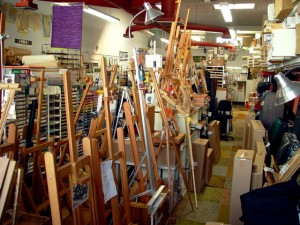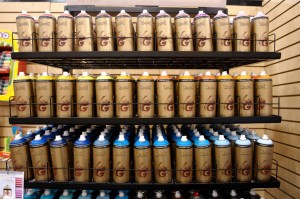 While all retailers are wrestling with what this recession will mean to consumer spending patterns in the months ahead, Karla Martin, a partner with Booz & Co. says savvy retailers are sifting through spending data to learn how they can use the downturn to their advantage – redefining the way they serve their core audiences.
While all retailers are wrestling with what this recession will mean to consumer spending patterns in the months ahead, Karla Martin, a partner with Booz & Co. says savvy retailers are sifting through spending data to learn how they can use the downturn to their advantage – redefining the way they serve their core audiences.
Karla says it’s all about smart allocation – stores devoting more space to what consumers want, and limiting the offerings that simply get in their way. Done well, it boosts profits and customer satisfaction. In fact, Booz says it’s the biggest trend in retailing since the Big Box. In a blog article at MediaPost entitled “Sales Down? Time To Dial Down The SKUs”, Martin explains how companies can reallocate resources and win new customers, even at a time when business is down.
What do customers want from retailers? Obviously it depends on types of store, but in general, there’s a widespread consumer frustration out there, with many shoppers feeling there are too many choices, presented in a way that’s needlessly complicated.
So in apparel, they want stores to be curators. You don’t go to a museum to see every landscape ever painted – you want to see things from the 18th-century pastoral school. They want that kind of editing. They want retailers to stock brands that show they understand a certain lifestyle, especially now, coming off five years of hard-core brand identification.
 In art supply stores, they see way too many SKUs. In a given year the average household buys far fewer than the 10,000 offered at the average art supply retailer. Many stores have seen category sales go up 25 to 50% when they streamline – consumers don’t necessarily want to see ten brands of oil color and seven lines of sable watercolor brush.
In art supply stores, they see way too many SKUs. In a given year the average household buys far fewer than the 10,000 offered at the average art supply retailer. Many stores have seen category sales go up 25 to 50% when they streamline – consumers don’t necessarily want to see ten brands of oil color and seven lines of sable watercolor brush.
It’s standard operating procedure for larger stores to schedule time to review their over all product offering, make some hard decisions and pare back slow moving lines and inventory through the process of a clearance sale. Chain stores call this “editing the mix”. In some cases it can be the end of a noble experiment such as a new color line that did not catch on or a collection of individual items throughout the store that seem to be collecting dust. It is a fact of life in retailing that the popularity of items is generally short lived. Consumers want their favorite stores to constantly re-invigorate their product selection as well and after all, the market can only support so many full ranges of color lines such as watercolor, oil and acrylic. When this time comes, strong and decisive action is called for. If you don’t, not only is valuable space being under-utilized, but more importantly, the financially resources that could be used to bring customers into the store are tied up unnecessarily in under-performing products.
So is it as simple as cutting back on the products that don’t sell? No, it really takes careful analysis and tough decisions. Sometimes, when stores make cuts based on the “numbers”, they can wind up cutting off their nose to spite their face. A consumer buying regularly from a slow moving line of paint may turn out to be a teacher who gets turned off by the store and sends her students down the street.
Chains also need to figure out what’s missing. In some stores, Kroger now sells milk in three-quarter-gallon containers for people who found a gallon too big and half-gallon too small.
 Is the recession actually changing consumer behavior, or are they the same, and just spending less? They’re spending differently, possibly less interested in new for newness’ sake, but open to products that can help them get better creative results. Consumers are buying less, and part of the reason is that they are being choosy. There are trends to take into account; Manga and Aerosol can not be denied. If you are hanging on to marginal product at the expense of trend or growth categories you need to reassess your judgment and priorities. If not, you and your store run a huge risk of being left behind.
Is the recession actually changing consumer behavior, or are they the same, and just spending less? They’re spending differently, possibly less interested in new for newness’ sake, but open to products that can help them get better creative results. Consumers are buying less, and part of the reason is that they are being choosy. There are trends to take into account; Manga and Aerosol can not be denied. If you are hanging on to marginal product at the expense of trend or growth categories you need to reassess your judgment and priorities. If not, you and your store run a huge risk of being left behind.
We’ve taken note of the steps needed to “edit the mix” and detailed a simple “outline for action” to help you get started:
Analyze: Use available data. POS if you have it, or a MacPherson’s AOD report. What’s the AOD report? We track all customer purchases for 12 months and we have a nifty report that shows all items ordered, how many bought and how many times each item appeared on an order. Look for too many duplicate lines in the same merchandise category. Make sure you end up with enough variety to satisfy the customers who shop your store.
Watch items within a line: Sizes of brushes, colors in a range… It is a common mistake for newcomers to the art supply world to look at the rate of sale figures for specific colors and conclude that 1/2 the line should be closed out. The reality is that some of the colors that are required on a class list have such tinting strength that the literally last forever and are rarely re-bought. If a store discontinues any in this category they will almost certainly lose the all important art class business.
Condense space: Once the decisions are made, plan the “exit strategy” to make room for new items and categories. It is generally better to move close outs to a special area of the store such as right inside the front door.
Conduct a clearance sale: A big sign in the front window says it all. Informally run a “tag sale” for a few weeks and then move it to tables in the front of the store.
Learn lessons for the items that did not work. And watch out for making the same mistakes.
What to choose when space and resources are freed up? Red hot Montana Cans, Manga, STABILO POS impulse pens? We can help and don’t be bashful, ask your MacPherson’s sales representative for your own AOD list.